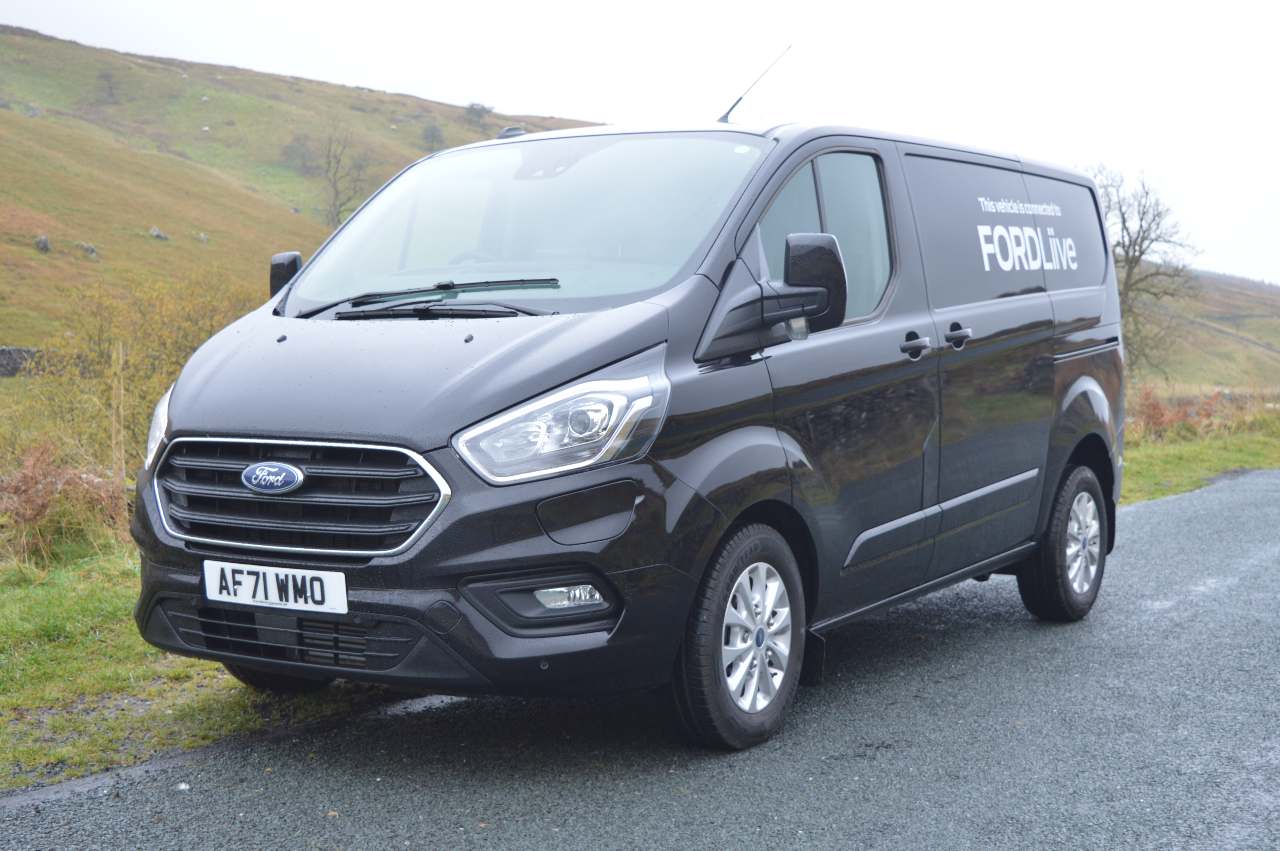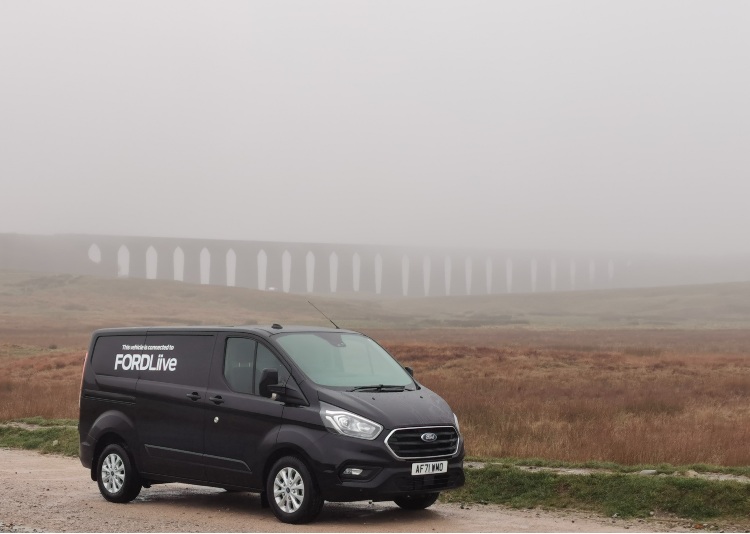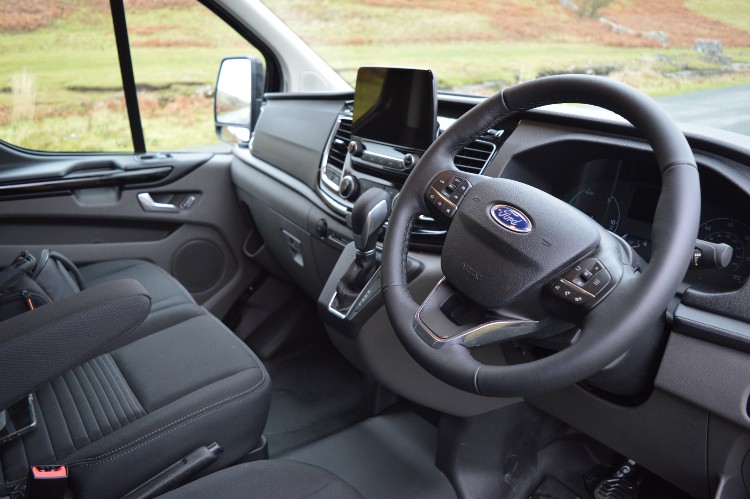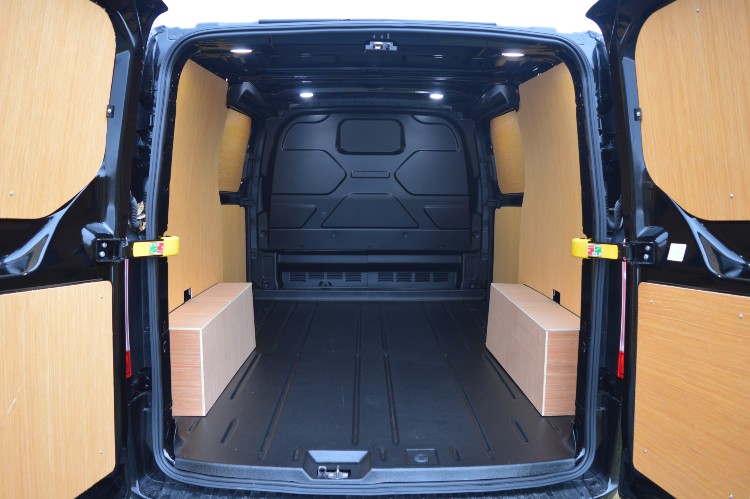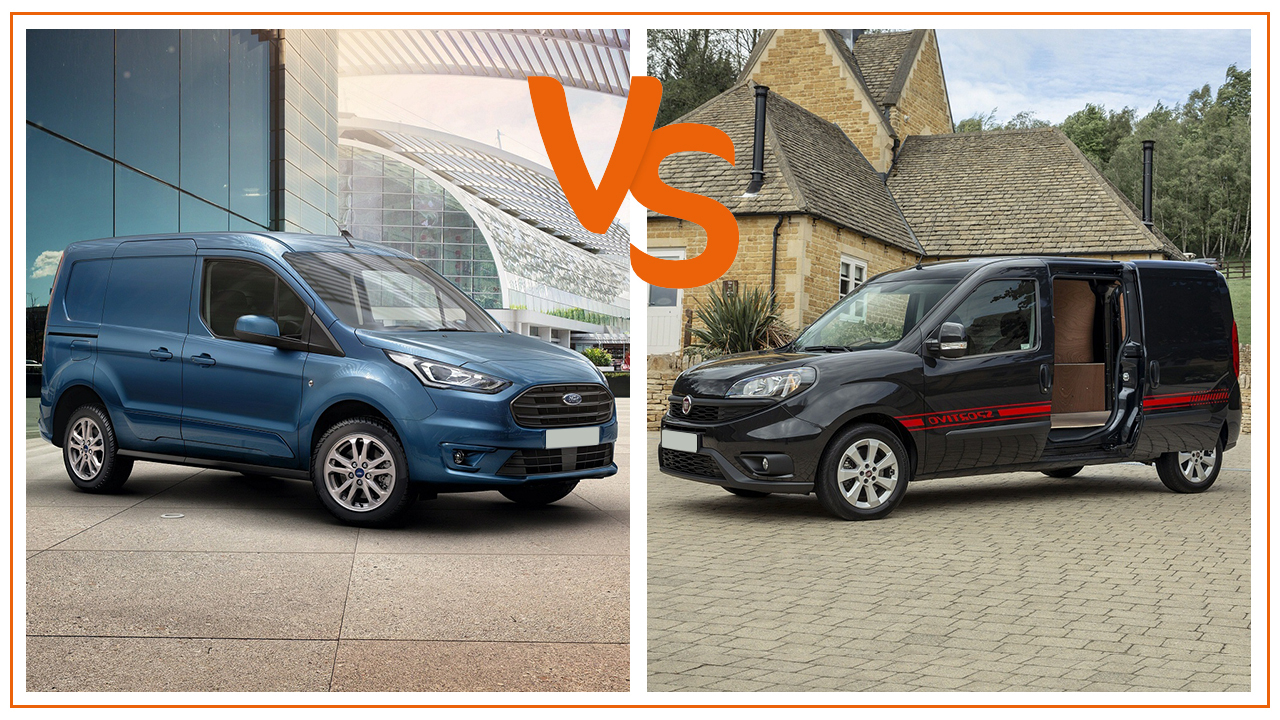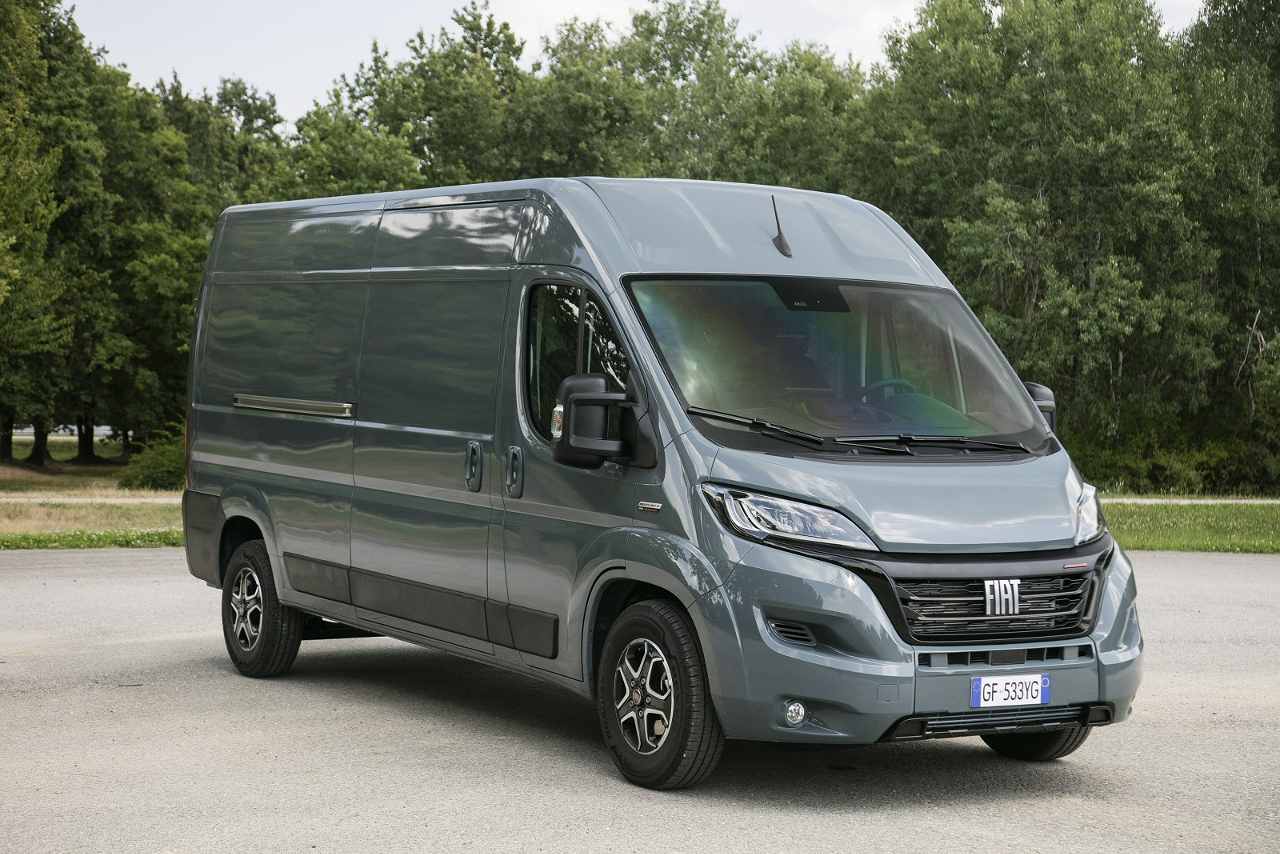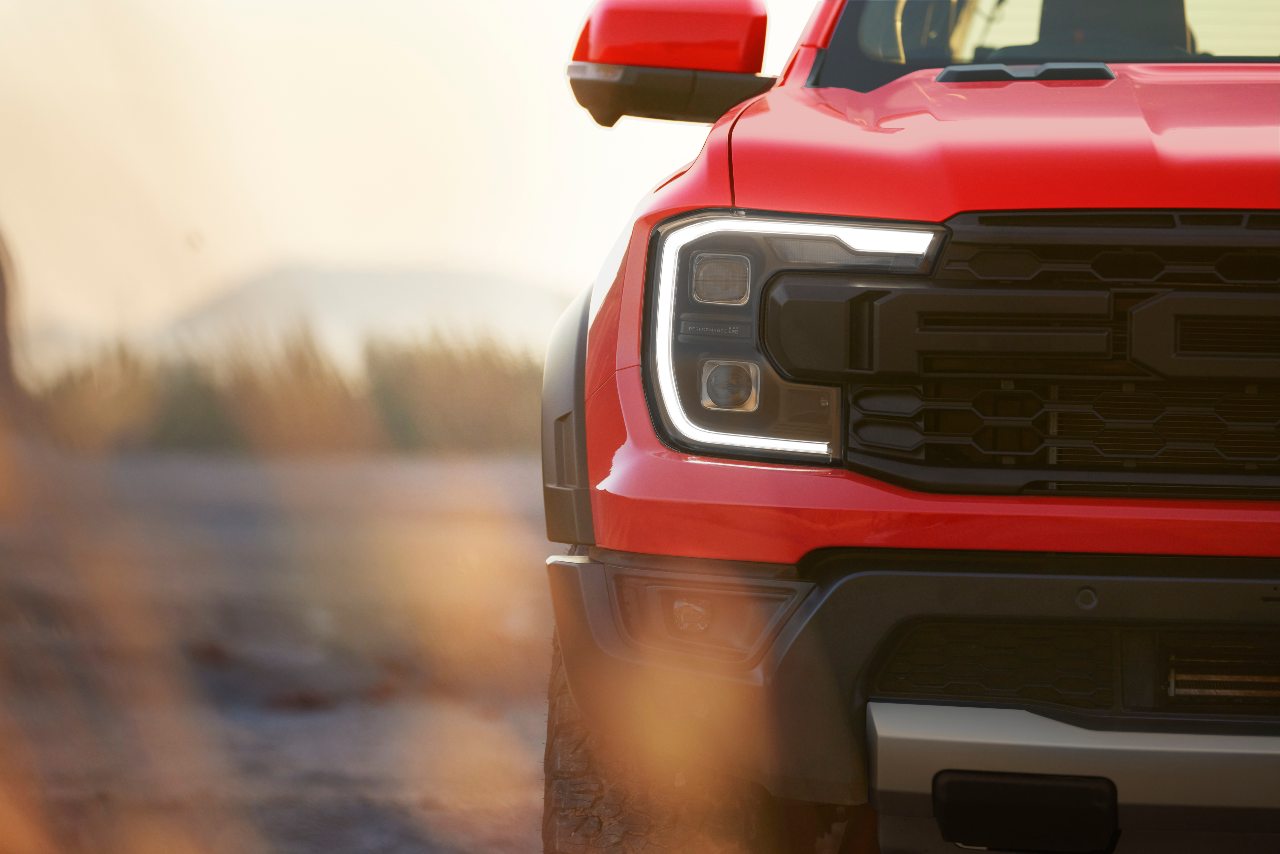It’s not Britain’s best-selling van for nothing. The Transit Custom has been around now for over 9 years and its comfort and practicality have made it a firm favourite with the sole trader and fleet users alike. There’s no fully electric Custom, but the PHEV Hybrid has been available for a year or 2 now. Our Van Expert Tim Cattlin recently got his hands on one for a week to see if a hybrid van has its place in today’s rapidly changing electric vehicle environment.
For someone who has been involved in the van industry for more decades than he’d like to think about, there was more than the normal excitement of the imminent delivery of a van from a manufacturers press fleet. As someone who has always been impressed by the Custom, the opportunity to put the hybrid model to the test has been eagerly anticipated for some time.
How is it different?
The Custom PHEV (Plugin Hybrid Electric Vehicle) is essentially an electric van. Although fitted with an engine (the 1.0 litre Ecoboost 3 cylinder petrol unit as fitted to the Fiesta), this never directly powers the vehicle. Think of it as an onboard generator which charges the vans battery pack ‘on the go’. You can also plug the van into a home or public charge point, but you’ll only get around 35 miles of range from a full charge.
Model availability
Although Custom as a diesel van is available in various combinations of length, height and weight, you’re a little more restricted when it comes to the PHEV. It’s only available in L1H1 guise (that’s short wheelbase, low roof) and in just the 340 weight derivative which is the Custom’s highest GVM (Gross Vehicle Mass) version. You’re a bit restricted in trim levels too with this hybrid van only being offered in mid-range Trend spec, and the higher end Limited series.
The van supplied for review was in Limited trim and really did look impressive in the manufacturer's black paint (with some promotional decals for Ford’s new ‘Liive’ telematics offering) and alloy wheels. Also fitted as standard at this trim level are body coloured side mouldings, door handles, mirror housings and bumpers together with a chrome grille surround. Despite being designed over a decade ago, but with a refresh in 2018 the Custom has aged very well and, although it’s subjective, I reckon that only the Volkswagen Transporter would come close in a ‘best looking medium van’ competition.
When it comes to standard equipment, Ford is pretty generous with the Limited. You get heated seats, air conditioning, heated windscreen, front and rear parking sensors and cruise control. Safety isn’t skimped on either with roll stability control, side wind stabilisation, traction control and emergency brake assist all included.
The test van had a number of optional extras fitted, including twin side load doors, a reverse camera and satellite navigation.
The Cabin
Clean, uncluttered and comfortable. There’s been a lot of thought put into the design of the cab and dash, and it works. The 8” multimedia SYNC 3 touchscreen dominates the dash, but all controls are in easy reach. There’s plenty of storage for the drivers bits and bobs and the mandatory cup holders are located at either end of the facia. The centre passenger seat can fold down to form a work surface, and there are multiple 12 volt and USB power outlets available.
The Load Area
Twin rear doors and a left side load door are the standard configuration for the Custom. At Limited trim level you get a load area protection kit which will protect your investment from nasty bumps and scrapes. The test van was fitted with optional LED lighting which is a real plus for anyone loading or unloading in poor daylight. The bulkhead protects the cab occupants and it has a hatch at floor level, allowing longer loads such as pipes to be carried safely within the van.
You’ll get load lengths of just over 2.5 meters in the Custom PHEV, and the payload of 1195kgs is very competitive for any medium van, let alone one which has a heavy battery pack onboard.
On The Road
OK, let’s get to the interesting bit. What’s it like to drive and how does the hybrid system work? There’s a choice of 4 EV modes, selected by a dash mounted button. We’ll discuss these in more detail later but let’s assume we’ve selected ‘EV Auto’ – this is the default setting that most users are likely to stick to.
So, you drive away with the 2 ‘fuel’ gauges on the dash showing full. One is the petrol gauge, the other shows the state of charge of the battery. You’ll also see a range indicator with 2 numbers on. The first is the range relating to the amount of petrol on board, the second what’s remaining in the battery.
Driving away is eerily quiet, with just the gentle hum of the electric motor in the background. Acceleration is instantaneous and rapid, and with no gear changes to interrupt the flow (it’s a single speed automatic transmission), the van gets up to your cruising speed very quickly. You’ll soon start to see the available battery range drop and, knowing that the engine never actually drives the vehicle the first time you drop into single figures it’s naturally a bit nerve wracking with you wondering just what happens next.
One way of delaying this is to use the regeneration facility available. On the left of the dash you’ll see a large needle with coloured segments. When the needle is in the green section (usually when your foot is off the accelerator, slowing down for traffic lights or descending a hill etc) the forward motion of the vehicle is putting charge back into the battery pack, extending the range available. The braking effect is considerable but, if you select ‘L’ on the gear selection lever rather than the usual ‘D’, you’ll find this braking effect quite severe, due to the fact that it’s replacing energy even more efficiently.
As soon as the available electric range gets to zero (and occasionally before, if the battery needs some help), you might hear the petrol engine kick in – it now continually generates enough electricity to keep the van moving as previously, but now you’ll see the range available from the petrol tank start to drop as it begins to be used.
What about the other EV modes?
‘EV Now’ means that the van will only use electric power (providing charge is available). This benefits those who need to travel in areas such as the London ULEZ (Ultra Low Emission Zone).
‘EV Later’ retains the electric range you’ve got for later, utilising the petrol engine to generate enough electric power to move the van. Useful if you’re anticipating driving through the ULEZ later on your journey, and you want to be sure you have the electric range in reserve.
‘EV Charge’ Although not very efficient, this will use the petrol engine to add charge as you’re driving, rather than it just generating enough to keep moving. Useful once again if you need to build the EV range for later but, you’ll hear the engine revving at high speed for much of the time and when you’ve become used to the Custom PHEV being so quiet in operation, this can be quite annoying. You’ll also see the petrol gauge dropping quite rapidly.
Geofencing? What’s that then?
There’s an intriguing little LCD display mounted on the extreme right of the dash. This displays the Geofencing status of the vehicle.
Potentially, it can be easy to stray into a zero emission area with the PHEV not running in ‘EV Now’ mode. Using the geofencing facility included as standard in the Custom PHEV, it is possible to create zones yourself, or to use pre-defined ones created by the manufacturer. Using GPS technology, your approach to one of these zones is indicated by a circular ring on the display gradually changing colour as you get closer. Once in the zone, the ring is completely filled with green and the van automatically switches to battery only power.
If you run out of charge whilst in the area, the van won’t leave you stranded, the petrol engine kicking in to ensure you keep moving, even if not entirely within the rules of the zone.
Should I Lease This, Or Go For A Fully Electric Van?
There are arguments for and against a hybrid vehicle. Those in favour would say that you get the best of both worlds – the ability to operate what is essentially an electric vehicle but without worrying about having to find a chargepoint, or becoming stranded. A 400-mile return journey in a working day? Not a problem. Not so easy in a fully electric van. You’re also contributing to making the air a little cleaner and helping the environment.
Others would say that there is little point – you’re burning a fossil fuel anyway so why not just lease a conventional, diesel powered vehicle until the ranges on pure electric vans have improved? Even the Government has withdrawn the concession whereby hybrid vehicles were exempt from the London Congestion Charge.
One thing is for sure, if you do decide to dip your toe into the water of the electric vehicle world, the Transit Custom PHEV is a truly excellent van. Well equipped, comfortable and the ability to operate almost silently and within areas such as a ULEZ are big selling points. Check out our latest lease deals on the Transit Custom PHEV.
If you’re looking to update to hybrid, or electric check out the latest lease deals at Vanarama.

